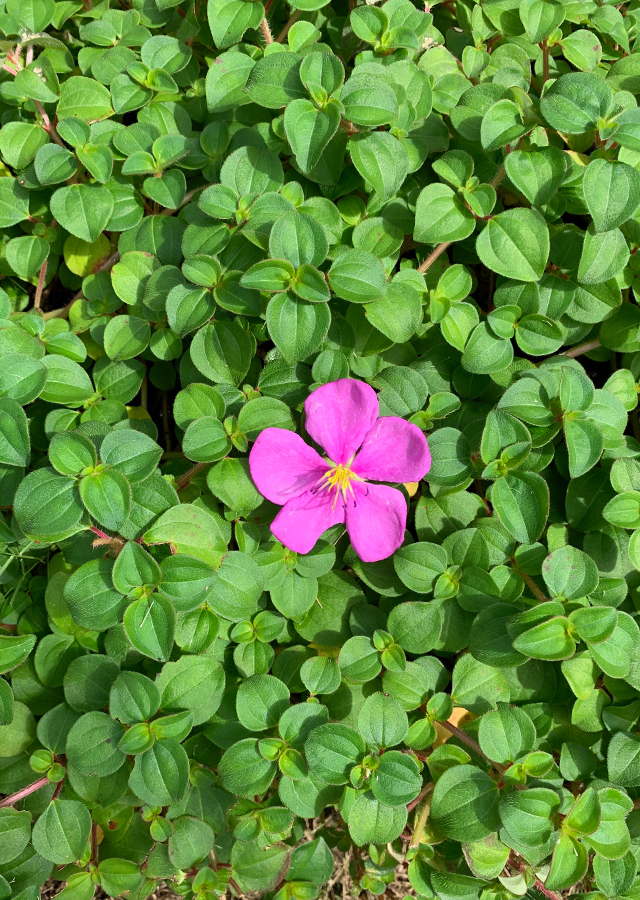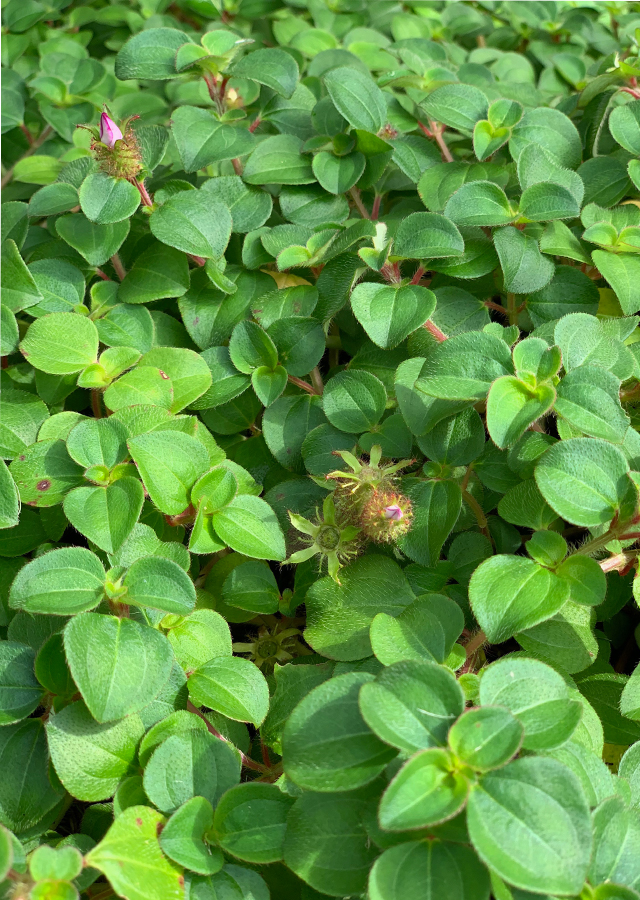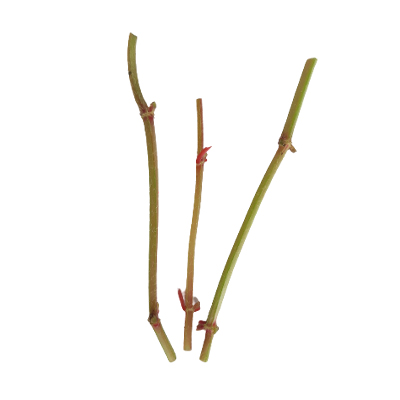Pink Lady
Heterotis rotundifolia (Sm.) Jacq.-Fél.
Melastomataceae
Location in our garden
Principal



Synonym
Asterostoma rotundifolia Blume
Dissotis plumosa Hook.f.
Dissotis rotundifolia (Sm.) Triana
Habitus
Climbers. Decumbent or prostrate herb, with stems that often root at the nodes.
Part Used
Leaves
Roots
Stem
Growing Requirements
Full Sunshine
Need Shade
Habitat
Wetland
Riverbanks
Forest
Grassland
Overview
Native to Africa - Sierra Leone to Ethiopia, Angola, Zimbabwe and Mozambique to the south. In the tropics, it is commonly cultivated as an ornamental and ground cover herb.
Vernacular Names
Spanish Shawl, Rockrose, Creeping princess flower, Trailing Dissotis, Dwarf Tibouchina, Trailing Tibouchina.
Agroecology
Find in wet places in the forest-zone, preferring secondary jungle, usually found in second and third year bush fallows, old cultivated land, palm-plantations, swamps, watersides; grassland, up to 1,200 m elevations. A moist soil in a sunny or partly shaded location is preferred.
Morphology
- Stems - lightly to densely hirsute.
- Leaves - ovate-suborbicular to oblongovate or ovate-lanceolate lamina, acute apex, briefly attenuated base truncate, slightly crenulate-ciliate margin, slightly to densely pilose on both surfaces. Midrib and 1(-2) pairs of lightly impressed basal longitudinal leaves above, subprominent below, 0.5-2.5 cm long petiole.
- Flowers - Solitary, or occasionally 2-4-flowered, cymes; 5-merous flowers. Cylindricalcampanulate calyx-tube, 5-7 mm long, 3-4 mm in diameter, sparse to densely pilose, hair intermixed with 1-2 mm long linear-subulate caducous appendages and placed at the apex. Pink, obovate petals, 20 mm in length, 15 mm in width. Stamens 10, unequal; broad stamens with 7 mm long anthers, 6 mm developed connective, 1.5 mm long bilobed appendages.
Cultivation
- Propagated by plants.
- By separating rhizomes, tubers, corms or bulbs (including offsets).
- From cuttings of herbaceous stems.
Chemical Constituents
Flavonoids, phenols, polyphenols, alkaloids, tannins, cyanogenic glycosides and anthraquinones.
Traditional Medicinal Uses
- It uses the leaves as an anthelmintic.
- In order to cure many diseases such as dysentery, rheumatism, circulatory disorders, conjunctivitis, venereal disease, and hookworm infestation, the plant is used as a medicinal plant; it is often used to reduce miscarriages.
- The extract has been shown to contain compounds which are effective in destroying the parasite that causes African sleeping sickness, Trypanosoma brucei.
Part Used
Reference Sources
- Fern, Ken. (2019). Useful Tropical Plants Dissotis rotundifolia. http://tropical.theferns.info/viewtropical.php?id=Dissotis+rotundifolia 18-03-2020
- Jstor. (No date). Global Plants. Dissotis rotundifolia. https://plants.jstor.org/compilation/dissotis.rotundifolia 18-03-2020
- Plant Breeding. (No date). Dissotis rotundifolia. http://plantbreeding.coe.uga.edu/index.php? title=20.1_Dissotis_Rotundifolia#:~:text=rotundifolia%20is%20used%20as%20a,An%20extract%20of%20D 18-03-2020
- Dave's Garden. (No date). Dissotis, Pinklady. https://davesgarden.com/guides/pf/go/60190/#b 18-03-2020


